While most Rhode Islanders travel south for their beloved beach activities around this time of year, a swath of farmers from all across South County make a trip north to places like Goddard Park and …
This item is available in full to subscribers.
We have recently launched a new and improved website. To continue reading, you will need to either log into your subscriber account, or purchase a new subscription.
If you are a current print subscriber, you can set up a free website account by clicking here.
Otherwise, click here to view your options for subscribing.
Please log in to continue |
|
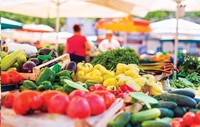

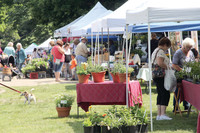
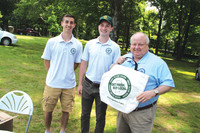
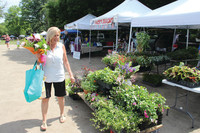
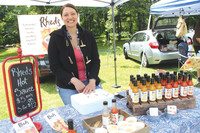
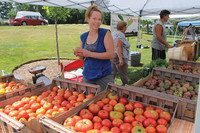
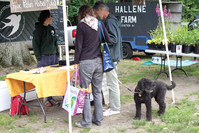
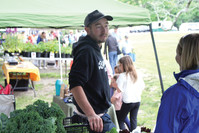
While most Rhode Islanders travel south for their beloved beach activities around this time of year, a swath of farmers from all across South County make a trip north to places like Goddard Park and Pawtuxet Village to sell their products during the summer.
That’s because of the explosion of farmers’ markets in the Ocean State over the past decade, as they are now one of the main outlets for farmers to sell produce - and for Rhode Islanders to get everything from locally grown meats and vegetables to plants, baked goods, and even hot sauce.
At the Goddard Park market, which runs every Friday from May to October between 9:00 a.m. and 1:00 p.m., there’s live music, plenty of nearby parking, and a wide variety of vendors set up to sell their products. People make an “outing” of going to the market, said Ken Ayars, the chief of agriculture for the state’s department of environmental management (DEM).
The DEM operates four farmers’ markets, according to Ayars. That includes the market at Goddard, the Fisherman’s State Park market in Galilee, a market outside the Department of Health building on Capitol Hill in Providence, and one at the Haynes Memorial State Park in East Providence. In addition to those, he said that there are a total of 45 markets in the state.
One of the draws of the state-run markets, Ayars said, is that they’re free for vendors and don’t have many regulations. Ally Dell, a farmer with Wild Harmony Farm in Exeter, said that they exclusively go to the Goddard Park because it’s free - and because they’ve tried getting into the smaller ones like Casey Farm and haven’t been able to.
Dell’s farm sells organic livestock - she thinks they’re the only one in the state to do so - and said they’ve “definitely been successful” at Goddard. Despite this being only their second year at the market, she said they’ve already built a “good customer base,” with “10 to 15 regulars” who get their meat for the week there. She said those regulars come early Friday morning to get the “good stuff,” before the rush hits between 10:30 and noon.
Wild Harmony also sells meat from their farm with a smart phone app called “whatsgood,” on which people can get meats delivered to their home or they can have them ready for pickup at any time.
Chris Ryan, another South County based farmer eager to make some money at Goddard this summer, has also embraced the digital age, accepting Bitcoin as a currency at his stand, though he said it’s pretty rare someone actually pays him with it.
Ryan and his wife have a private farm in Saunderstown dedicated mostly to vegetables, which they sell at the farmer’s markets at Goddard and at Fisherman’s. These markets are especially important to them, as he said that “90 to 95 percent” of their yearly business comes from them.
Ryan said they lease the land they farm, but are saving up to buy their own plot of land, though he said that they’re looking at Maine right now because real estate in Rhode Island is so expensive. Meanwhile, he said he’s formed connections with the other farmers that sell at markets like Goddard.
“Most of the vendors, we all work together,” he said, adding that there’s never really a competitive nature between the sellers. “All the vegetable growers have a group text message we post in whenever somebody has a question or needs something.”
One of those other vendors is Brandon Family Farm, whose post was being manned by Lisa Brandon at Goddard this part Friday. One of the few vendors that had the official USDA certified organic stamp, the West Kingston based farm has been selling produce at multiple farmer’s markets for the past three years, including the year-round market in South Kingstown. She said that they farm in high solar tunnels during the winter, when they usually produce the “leafy stuff” - kale, spinach, and Swiss chard. Produce like fruits and some other vegetables are better to grow in the summer, she said.
“People want to support local farmers,” she said about why they’ve been successful at farmer’s markets. “They want to know their farmers, know where their food is coming from, and know how much nutrition is in their food. They’d rather have food right from the farm than if it were sitting in a truck driving cross country.”
As for recurrent customers at these markets, Brandon said, “people start to appreciate what you grow.”
That appreciation between consumer and farmer is one of the main explanations for why farmers’ markets have become so popular in recent years, Ayars said.
He said that although there are 45 markets now, they weren’t nearly as popular when he became chief of agriculture in 1998, when there were only eight farmers’ markets in the state.
“More local food seems to be the driving force, directly accessing fruits and vegetables and baked goods right from the source,” he said. “It’s not changed hands multiple times, wasn’t driven across the country. The public in our state are very interested in this. It’s good for our farmers.”
Though they’ve been on the upswing in recent years, though, he said they’re still dictated by the state’s food economy and he thinks they’ve found a good balance at 45 markets. He doesn’t think they’ll continue to grow all that much going forward, because of economic restrictions, but he does see the current ones still becoming more popular, and certain food markets within the farmer’s markets, such as seafood, increasing in profitability.
“Goddard is always popular, but it’s been explosive this year,” he said. “It’s a central location, it’s a beautiful park. A lot of children come, families use that as something to do outside for the day.”
He said that pricing of the goods is “a balancing act.”
“If it’s too high, you drive people away,” he said. “The prices do tend to be a little bit higher than a supermarket, but what you’re getting is the added value of location and a very direct route from producer to user. The ambiance of the farmer’s market scene, that’s what people are willing to pay a few extra dollars for their fruits and vegetables for.”
To help people afford the food at the markets, Ayars said the DEM has coupons redeemable at each of their markets that are redeemable at farm stands. He also said there is an EBT machine at their markets for people who are SNAP (food stamp) eligible based on income, so they can get “bonus bucks” by buying products at farmer’s markets, and then redeem those for actual currency later on. To fund some of their farmer’s market programs, they receive $200,000 from the U.S. department of agriculture (USDA).
“As an agency we’re very happy to play this role, we’re very interested in the local agriculture and food economy,” Ayars said. “Ultimately we as a state are interested in reaching the goal of more of our food being produced locally. We want 50 percent of food produced locally by 2060.”
He said that only two or three percent of the food in Rhode Island is produced locally now, with around 10 percent produced locally across New England.
“The more we can enhance connectivity and improve viability of our farms, the seafood systems, the more the local food economy can grow,” he said.
Comments
No comments on this item Please log in to comment by clicking here